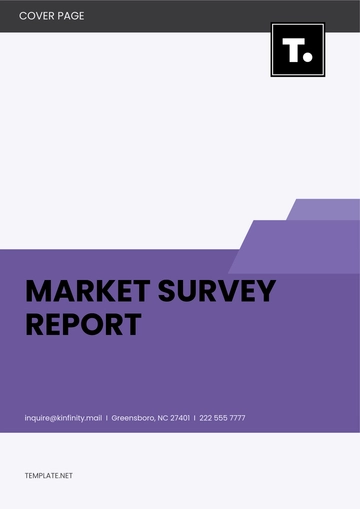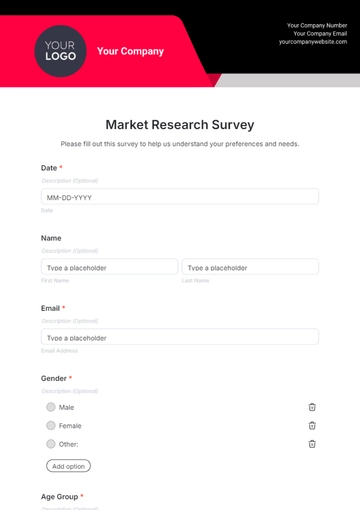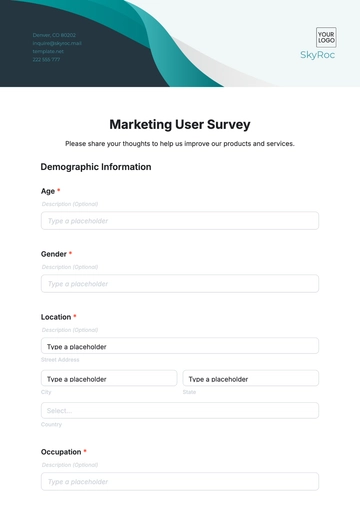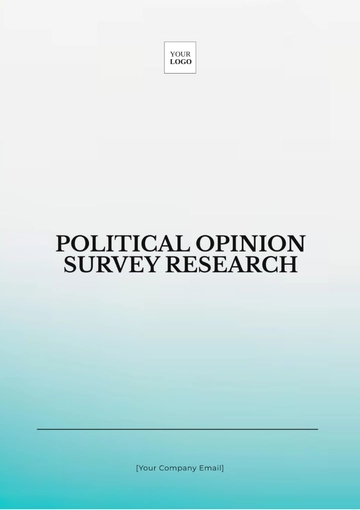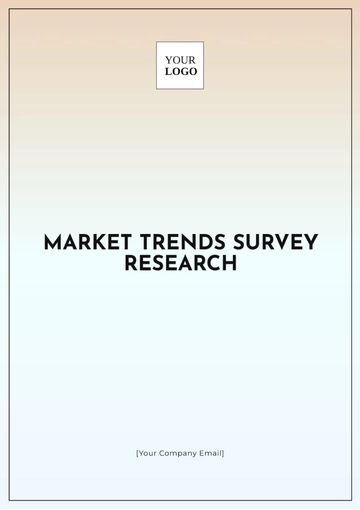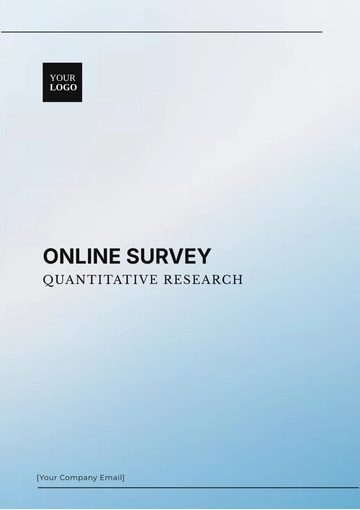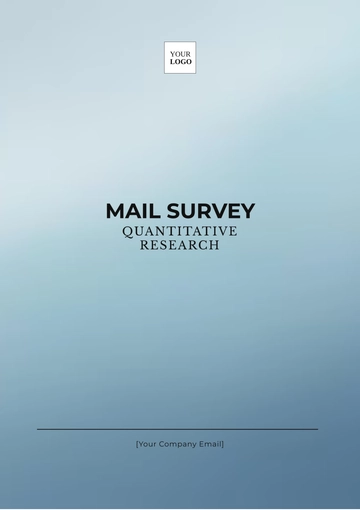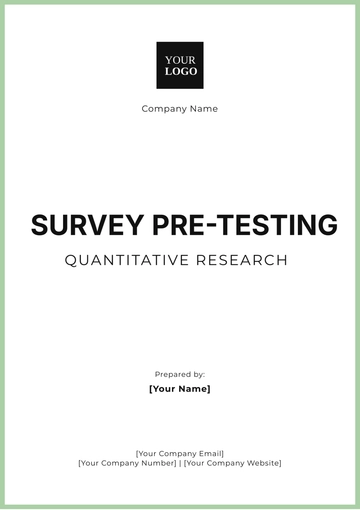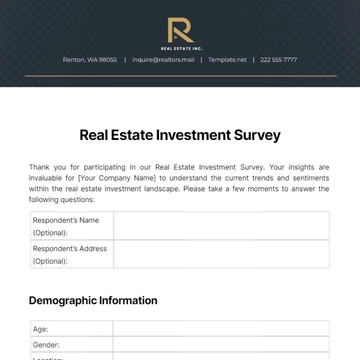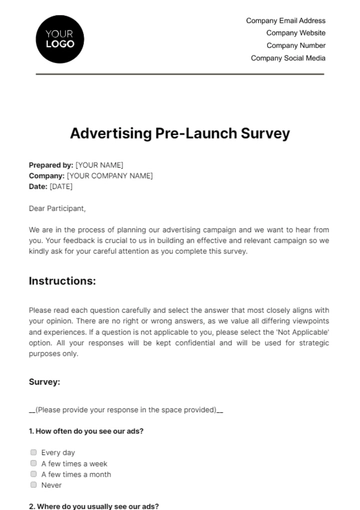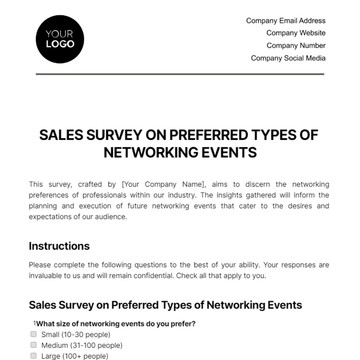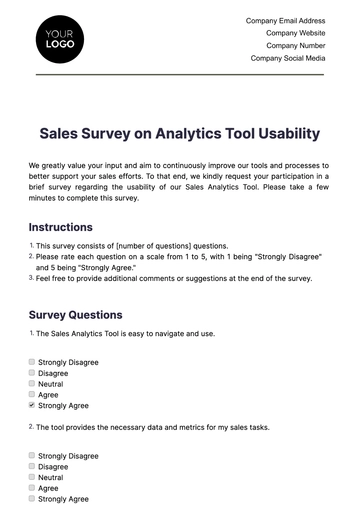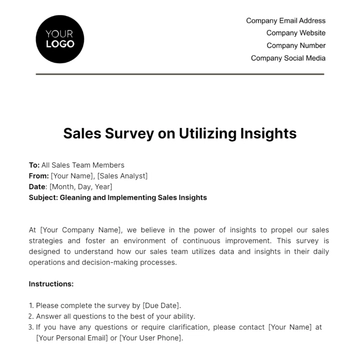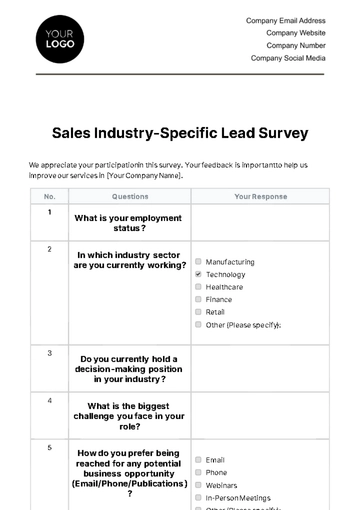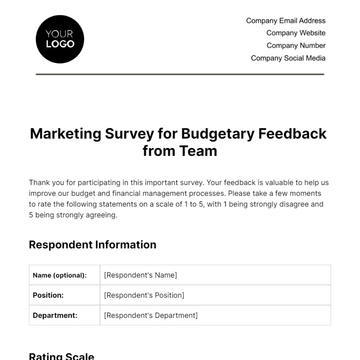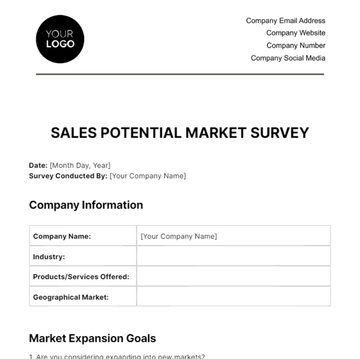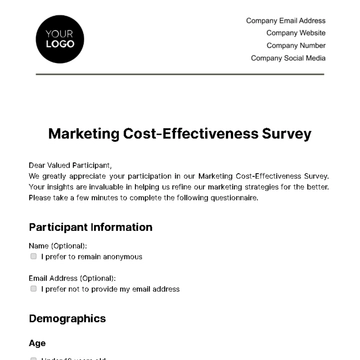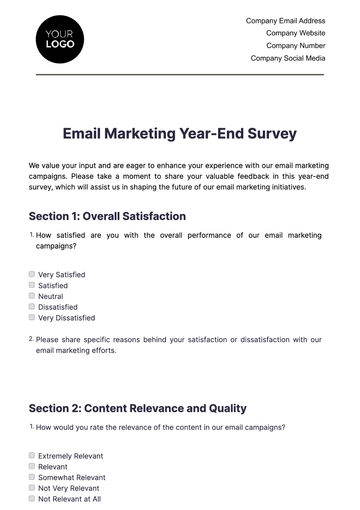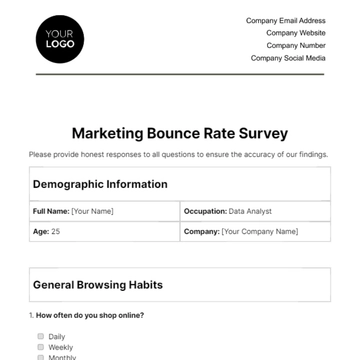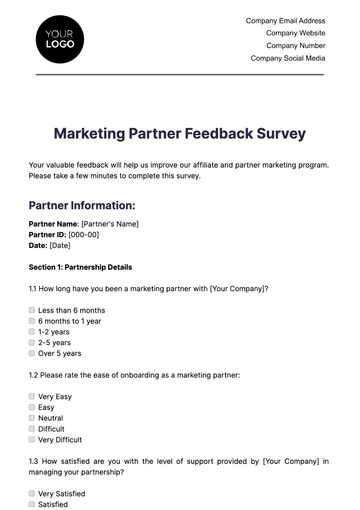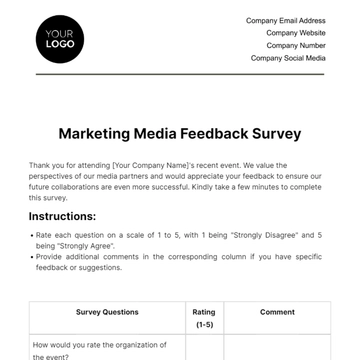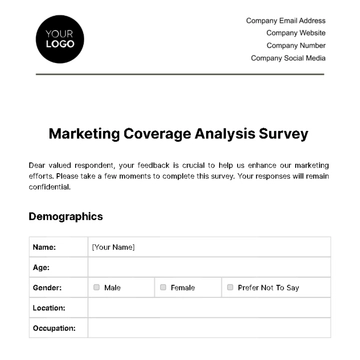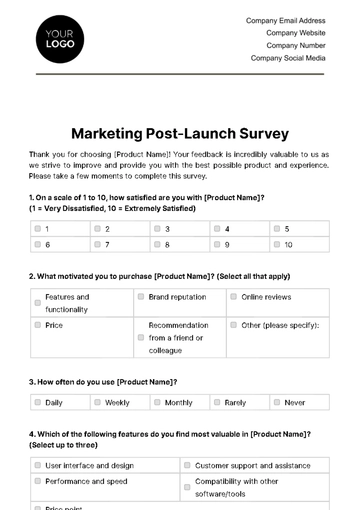Free Political Opinion Survey Research
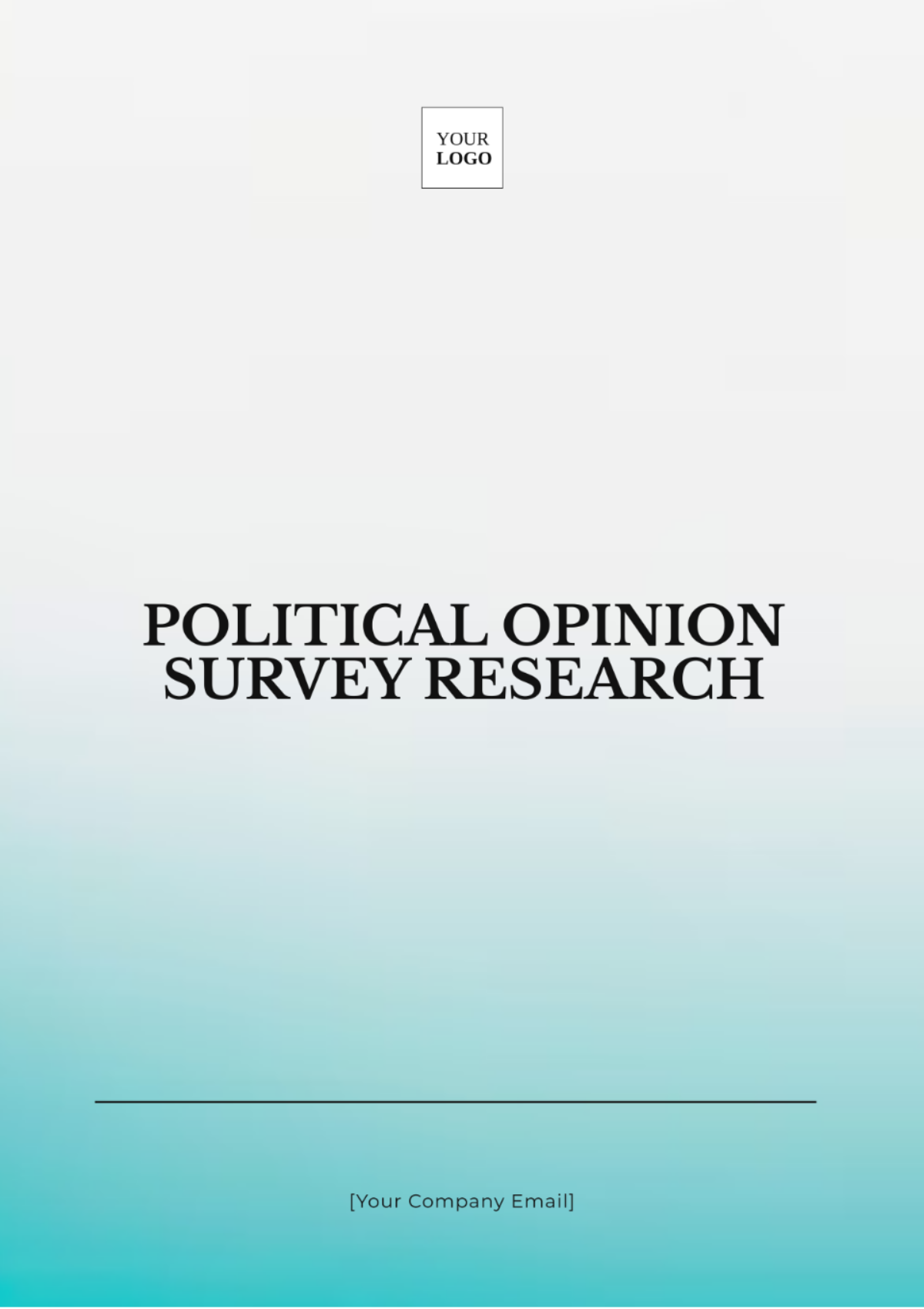
Prepared By: [YOUR NAME]
Date: [DATE]
I. Introduction
A Political Opinion Survey Research systematically gathers data from a sample of individuals to understand their attitudes, beliefs, and opinions regarding political topics, candidates, parties, policies, and events. The purpose of this study is to measure public sentiment, gauge political awareness, and predict voting behavior by examining various demographic variables and historical trends.
II. Methodology
The survey employed a stratified random sampling method to ensure a representative sample of the population. The sample comprised 1,500 respondents, reflecting the population's diversity. Data collection was conducted through online questionnaires and telephone interviews over four weeks, from June 1, 2050, to June 30, 2050. The survey covered topics including political preferences, policy opinions, and levels of political engagement.
III. Demographics
The demographic breakdown of the survey respondents is as follows:
Age | Gender | Ethnicity | Political Affiliation |
|---|---|---|---|
|
|
|
|
IV. Key Findings
Approval Rating: The current administration has an approval rating of 45%.
Top Issues:
Voting Intention: 60% of respondents plan to vote in the upcoming elections.
V. Detailed Analysis
A. Approval Rating by Age Group
Age Group | Approval Rating |
|---|---|
18-24 | 50% |
25-34 | 40% |
35-44 | 45% |
45-54 | 42% |
55+ | 48% |
B. Voting Intention by Demographic
Age Group | Intend to Vote |
|---|---|
18-24 | 65% |
25-34 | 60% |
35-44 | 55% |
45-54 | 70% |
55+ | 75% |
C. Approval Rating Trends
Year | Approval Rating |
|---|---|
2051 | 45% |
2050 | 50% |
D. Top Issues Shift
Issue | Current Year (%) | Previous Year (%) |
|---|---|---|
Healthcare | 25% | 22% |
Economy | 20% | 25% |
Education | 15% | 17% |
Immigration | 10% | 12% |
Climate Change | 10% | 11% |
Others | 20% | 13% |
VI. Comparative Analysis
The comparative analysis highlights key shifts and trends between the current survey results and those from previous years. This section provides a deeper understanding of how public opinion has evolved and identifies areas of change or consistency.
A. Approval Rating Trends
The current survey reveals a notable decrease in the administration’s approval rating, dropping from 50% in 2050 to 45% in 2051. This 5% decline indicates a shift in public sentiment, which could be influenced by various factors including policy changes, economic conditions, or recent political events.
In 2050, the approval rating remained fairly consistent, indicating a time of moderate public contentment.
The decline in 2051 suggests growing dissatisfaction or emerging issues that have impacted the administration's image.
B. Top Issues Shift
The survey data illustrates significant changes in the public’s concerns over key issues. While healthcare remains the top issue, its percentage has increased slightly from 22% in the previous year to 25% this year. Conversely, concern for the economy has decreased from 25% to 20%, indicating a shift in priority.
Healthcare: Continues to be a major concern, with a slight rise in its importance. This could reflect ongoing debates or challenges related to health policies.
Economy: Shows a decrease in priority, which might suggest improvements in economic conditions or a shift in public focus to other pressing issues.
Education and Immigration: Both issues have seen minor changes, with education slightly decreasing from 17% to 15% and immigration decreasing from 12% to 10%. This may indicate a reduced urgency or changing perceptions about these topics.
Climate Change: The concern for climate change has remained relatively stable, with a slight decrease from 11% to 10%, suggesting that while still relevant, it may not be as immediate a concern for the public at this time.
Others: The category encompassing various issues has increased from 13% to 20%, potentially reflecting a rise in diverse concerns or emerging issues not covered in the main categories.
VII. Conclusion
The survey reveals a complex political landscape where public opinion is shifting significantly. Although the current administration maintains a moderate approval rating, it has declined from the previous year, reflecting potential growing dissatisfaction. Key issues such as healthcare continue to dominate public concern, while priorities like the economy and climate change have shifted. These changes highlight the need for policymakers to respond proactively to evolving public concerns, particularly in healthcare and economic policy, to maintain or improve public support.
VIII. Appendices
Appendix A: Survey Questionnaire
Appendix B: Raw Data Tables
References
APA Style: Smith, J. (2053). Political Opinion Survey Research. Journal of Political Sciences, 12(3), 245-260.
- 100% Customizable, free editor
- Access 1 Million+ Templates, photo’s & graphics
- Download or share as a template
- Click and replace photos, graphics, text, backgrounds
- Resize, crop, AI write & more
- Access advanced editor
Engage with your community and understand their views with our Political Opinion Survey Research Template from Template.net. This customizable and editable template provides a framework for asking the right questions to get the answers you seek. Use our Ai Editor Tool to tailor your survey to specific political issues and demographics for more precise results.

